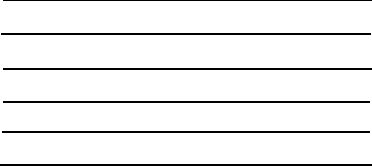
User-defined Characters
An example will show how to specify n1 and n2. For instance, if you
wanted to redefine the characters A through Z, n1 would be ASCII A
(or decimal code 65) and n2 would be ASCII Z (or decimal code 90).
So the command ESC & 0 AZ (followed by the appropriate data)
would replace the entire alphabet of capital letters.
Following the specification of the range of characters to be defined in
this command are three data bytes, d0, d1, and d2, that specify the
width of the character and the space around it. The left space (in dot
columns) is specified by d0, and the right space is specified by d2.
The second byte, d1, specifies the number of columns of dots that are
printed to make up the character. By varying the width of the
character and the spaces around it, you can create proportional
width characters that print at draft speed. The table below shows the
maximum values for these bytes.
Mode
d1 d0+d1+d2
Draft
91
12
Letter Quality 10 cpi 29
36
Letter Quality 12 cpi
23
30
Proportional
37
42
The last part of the command to define your characters is the actual
data that defines the dot patterns for each character. Because it takes
three bytes to specify all the dots in one vertical column, your printer
expects d1 x 3 bytes of data to follow d2.
4-22 Software and Graphics


















